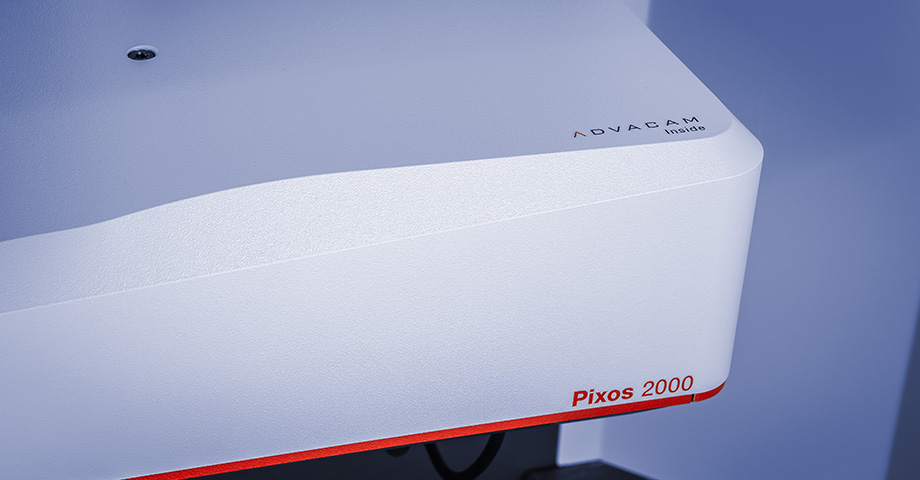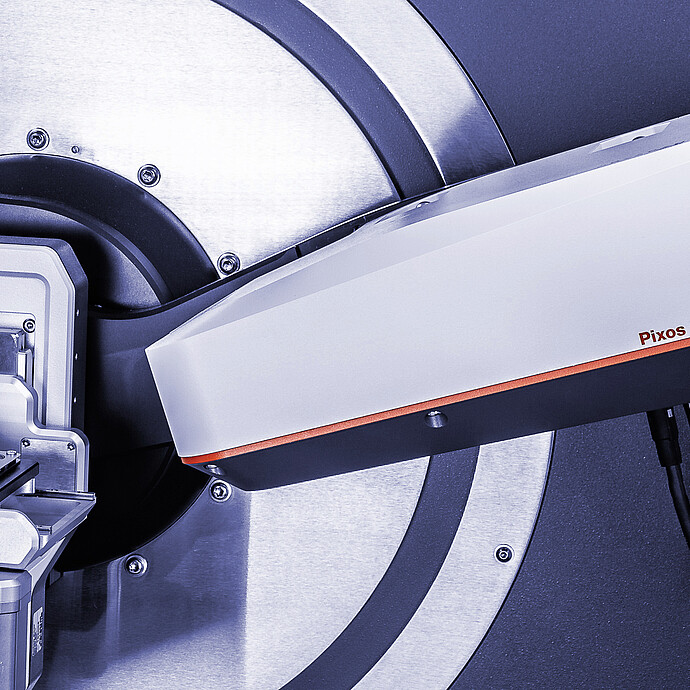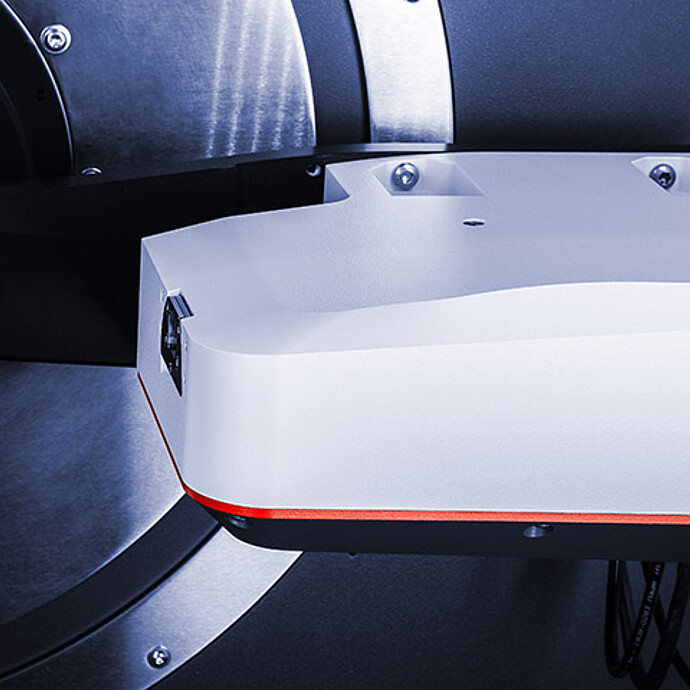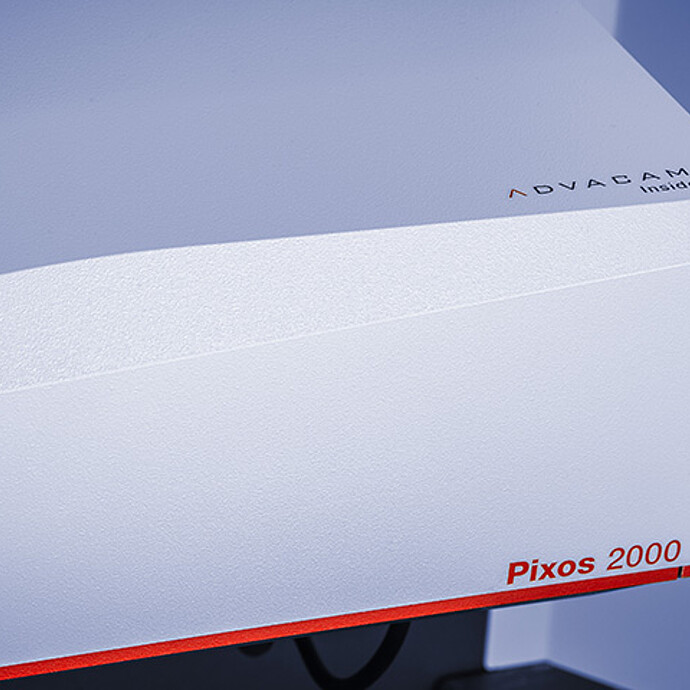XRD Detection Units:
Pixos
- Implements the latest CERN pixel detector technology with advanced noise reduction
- Measure in 0D or 1D modes with a choice of sensor material
- Smallest pixel size (55 µm x 55 µm) for outstanding resolution
- Energy filter to further minimize measurement background
To obtain the best data quality from your X-ray diffraction experiments, the Pixos™ detection units combine the latest CERN detector technology by Advacam with the TruBeam™ concept of the XRDynamic 500 diffractometer. Counting individual photons with a high spatial resolution thanks to the smallest pixel size available for an XRD detector (55 µm x 55 µm), the solid-state Pixos™ detectors provide the highest intensity and best resolution for your diffraction data and can operate in 0D or 1D modes. The fully evacuated secondary optics and detector housing ensures excellent signal-to-noise ratio while maintaining optimal experimental flexibility thanks to the fully motorized X-ray optics.
Key features
Next-generation detector technology for high-quality diffraction data
Solid-state hybrid pixel detectors included in the Pixos™ detection units are based on the Timepix3 chip from CERN. High spatial and temporal resolution for the detection of individual photons results in excellent angular resolution of the diffraction signal when working in 1D mode. Single-photon counting detectors provide the best data quality even with low measurement signal, while a high maximum count rate allows measurements in the direct beam without the need for attenuators or beam stops.

Full evacuation: Measure with the lowest possible background
Avoiding air scattering during the measurement, the fully evacuated Pixos™ detection units ensure an optimal signal-to-noise ratio in every measurement. This is particularly important for background-sensitive measurements, such as PDF analysis or SAXS, or for small sample quantities with a weak scattering signal. In combination with the other components of the TruBeam™ concept, the evacuated secondary beam path contributes to the high data quality that can be measured by the Pixos™ detection units of XRDynamic 500.

Outstanding resolution with the smallest pixel size on the market
The detectors of the Pixos™ detection units offer unbeatable measurement resolution thanks to a pixel size of 55 µm x 55 µm – the smallest available on the market for an XRD platform. The small pixel size, in combination with the extended goniometer radius featured in the TruBeam™ concept of XRDynamic 500, means that a measurement resolution 20 % better than a conventional diffractometer can be achieved when measuring with a standard Bragg-Brentano configuration.

Minimize noise with automatic optimization
The Pixos™ detection units include a high-precision motorized anti-scatter slit which can be set using the instrument control software for each scan. With a choice of modes, it is up to you to either set a defined slit opening or to make life simpler by using the automatically optimized mode that ensures maximum shielding of scattered noise without cutting the measurement signal.

Specifications
| Pixos 2000 | Pixos 2000 CdTe | |
| Detection modes | 0D, 1D | 0D, 1D |
| Sensor material | Si | CdTe |
| Pixel size | 55 μm x 55 μm | 55 μm x 55 μm |
| Number of pixels | 256 x 256 | 256 x 256 |
| Maximum count rate | 2.65 x 109 cps (row) 6.8 x 1010 cps (overall) | 2.65 x 109 cps (row) 6.8 x 1010 cps (overall) |
| Supported wavelengths | All (optimized for Cu, Co, Cr) | All (optimized for Mo, Ag) |
| Defective channels | 0 | 0 |
Anton Paar Certified Service
- More than 350 manufacturer-certified technical experts worldwide
- Qualified support in your local language
- Protection for your investment throughout its lifecycle
- 3-year warranty










